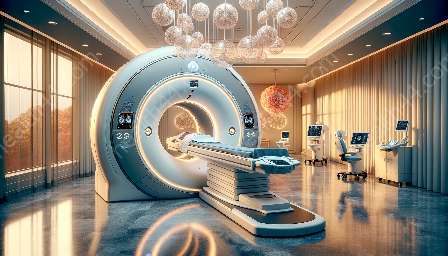Biopsy devices play a crucial role in the field of medical imaging and equipment, allowing healthcare professionals to extract tissue samples for diagnosis and treatment. In this comprehensive guide, we will delve into the various types of biopsy devices, their compatibility with medical imaging technology, and their impact on the overall landscape of medical devices and equipment.
Understanding Biopsy Devices and Their Function
Biopsy devices are integral tools used by medical professionals to obtain tissue samples from the body for diagnostic purposes. These samples help in identifying and diagnosing various medical conditions such as cancer, infections, and inflammatory diseases. Biopsies are essential for accurate diagnosis and are often performed using different biopsy devices based on the specific tissue or organ being targeted.
Types of Biopsy Devices
Biopsy devices come in various forms, each designed for specific tissues and procedures. Some common types of biopsy devices include:
- Needle Biopsy Devices: These devices utilize thin, hollow needles to extract tissue samples from organs or lesions. They are commonly used for biopsies of the breast, prostate, liver, and kidneys.
- Endoscopic Biopsy Devices: Endoscopes equipped with biopsy forceps or brushes are used to obtain samples from the gastrointestinal tract, respiratory tract, or urinary system.
- Surgical Biopsy Devices: In cases where a larger tissue sample is needed, surgical biopsy devices are employed to remove a portion of the tissue or the entire affected area for analysis.
Integration with Medical Imaging Devices
Biopsy devices are closely integrated with medical imaging technology to guide the precise placement of the device and ensure accurate tissue sampling. Medical imaging devices such as ultrasound, MRI, and CT scans provide real-time visualization of the targeted tissues, enabling healthcare professionals to navigate the biopsy device to the precise location for sample extraction.
Furthermore, the combination of biopsy devices with medical imaging technology allows for minimally invasive procedures, reducing patient discomfort and recovery time while offering high precision and accuracy in obtaining tissue samples.
Impact on Medical Devices & Equipment
The advancements in biopsy devices have significantly impacted the landscape of medical devices and equipment. The integration of biopsy devices with medical imaging systems has improved the overall diagnostic and treatment capabilities in healthcare settings.
Additionally, the development of innovative biopsy devices, such as robotic-assisted biopsy systems and advanced needle technologies, has enhanced the efficiency and accuracy of tissue sampling, leading to better patient outcomes and reduced procedural complications.
Conclusion
Biopsy devices continue to be pivotal components in the realm of medical imaging and equipment, offering a crucial means for obtaining tissue samples essential for accurate diagnosis and treatment. As technology and innovation advance, the synergy between biopsy devices, medical imaging, and other medical devices and equipment will undoubtedly lead to further improvements in patient care and medical practices.


